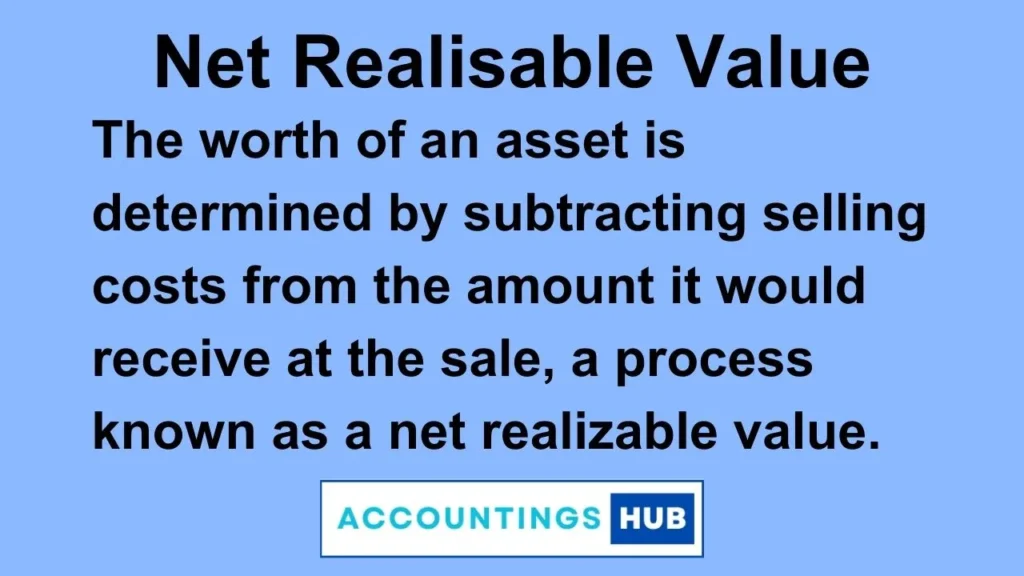Net Realisable Value of inventories is the estimated selling price in the ordinary course of business
less the estimated costs of completion and
less the estimated costs necessary to make the sale.

The estimated selling price may or may not be equal to fair value depending upon how the entity sells in the ordinary course of business. Fair value is the price received to sell an asset or paid to transfer a liability in an orderly transaction between market participants at the measurement date.
Write Down Net Realisable value of Inventories
The following points should be noted:
- Record Inventories originally at cost
- Measure inventories at a lower cost and NRV
The above has the following implications:
- If the cost is lower, there is no need for adjustment
- If NRV is lower, the carrying amount of inventories is reduced (written down) to its NRV and the difference is recorded (in a periodic system, automatically) as an expense (loss).
The practice of writing down inventories below cost to Net Realizable Value is consistent with the view, that assets should not be over amounts expected to be realized from their sale or use.
Reasons for Writing Down
The cost of inventories may not be recoverable if:
- those inventories damaged;
- wholly or partially obsolete;
- their selling prices have declined;
- the estimated costs of completion have increased; or
- the estimated costs incurred to make the sale have increased.
Item by Item
Inventories are usually written down to NRV item by item. In some circumstances, however, it may be appropriate to group similar or related items. It is not appropriate to write inventories down based on a classification of inventory, for example, finished goods, or all the inventories in a particular operating segment.
Net Realisable Value
Materials and other supplies held for use in the production of inventories are not written down below cost. If the finished products in which they will be incorporated are expected to be sold at or above cost.

Example:
Goods purchased are to sell, cost of Rs. 10,000 have been damaged. At the year-end, their replacement buying price is Rs. 9,000. They sold in the normal course of business for Rs.14000. And provided Rs. 4,500 is spent on rectifying the damage.
Required:
At what amount should be the value of the stock?
Answer
| Rs. | |
| Cost | 10,000 |
| NRV (Rs. 14,000 – 4,500) | 9,500 |
| Reported value in financial statements (lower) | 9,500 |
| Write down to NRV (loss) Rs. 10,000 – 9,500 | 500 |
Frequently Asked Questions
What is the meaning of NRV?
The worth of an asset is determined by subtracting selling costs from the amount it would receive at the sale, a process known as a net realizable value, or NRV. Accountants use the conservative NRV method to make sure an asset’s worth is not overstated.
What is the NRV formula?
Net realizable value is the amount of money, after deducting any related expenditures, that a business anticipates receiving from the ultimate sale or disposal of an object. The net realizable value, or NRV, is the sales value less the expenses like taxes and selling fees.
What is NRV in inventory?
The value at which an asset can be sold less the expected costs associated with doing so is known as net realizable value or NRV. We are estimating the value of closing inventory or accounts receivable.
When cost is greater than NRV?
This essentially indicates that a write-down from the recorded cost to the lower net realizable value (NRV) would be done if inventory was carried on the accounting records at a value higher than its NRV. Essentially, there would be a credit to the inventory account and an offset debit for the decline in net present value.
